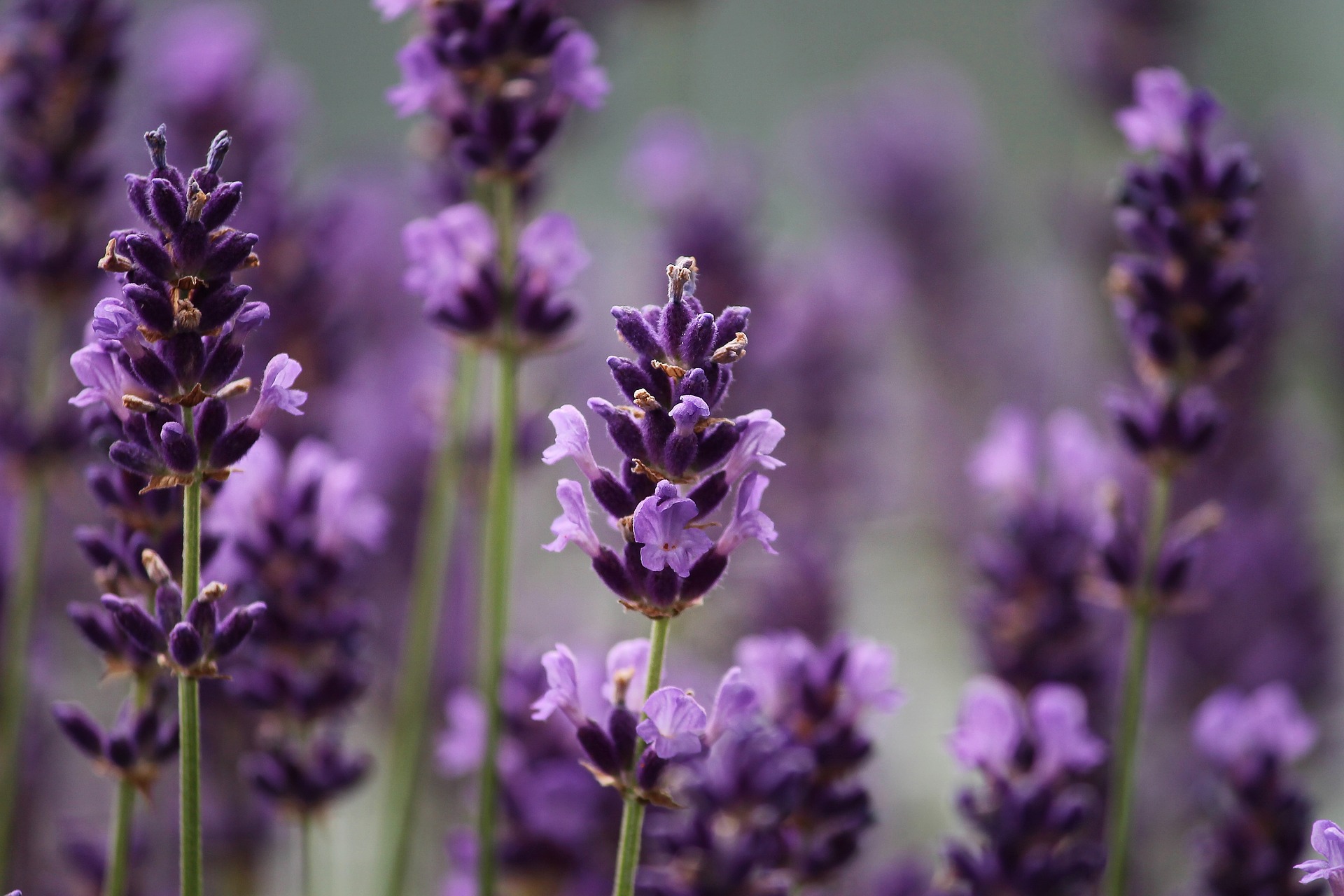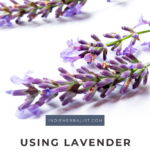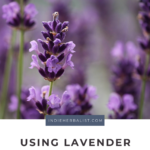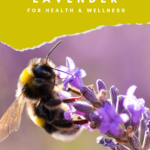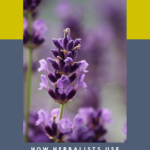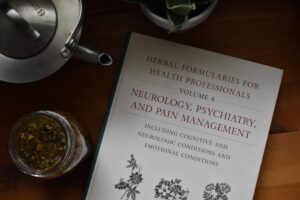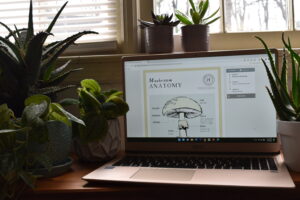Links contained in this post and elsewhere on my website may include affiliate links. When you make a purchase through these links, I earn a commission at no additional cost to you. I only link to products and services that I love - and that I think you will love, too!
A soothing floral herb for mind, body, and soul, lavender benefits abound. Here’s how to use lavender for health and wellness. Herbalists use lavender for the nervous system, digestion, and topically for muscle pain.
I love keeping lavender extract on hand and using it as a simple. However, it also works well blended with other herbs. Below, you can find everything you need to start using lavender in your own wellness routines.
What type of lavender is best?
Several species of lavender have a beautiful aroma. However, not all of them are useful to herbalists. Gardeners often grow
- English lavender (Lavandula angustifolia)
- Spanish lavender (Lavandula stoechas)
- French Lavender (Lavandula dentata)
- Portuguese Lavender (Lavandula latifolia)
It’s also common to find Lavandula x intermedia (lavender hybrids) at garden centers. Lavandula angustifolia is the official lavender in herbalism.
Useful parts of lavender
As herbalists, we use lavender flowers. The aromatic oils of the plant are most concentrated in the flower buds right before they open.
Lavender flowers contain many different phytochemicals. These include volatile oils like linalool, lavandulyl acetate, borneol, and limonene. Coumarins and triterpenes are also found in lavender. (Hoffman, 2003)
When purchasing lavender flowers, look for flowers that have a dark blue color and strong fragrance. Many herb shops I’ve seen display their herbs in clear glass jars on open shelves. Pass on those- the flowers fade in the light and quickly lose their beneficial properties.
Instead, look for a local herb farm where you can purchase your lavender soon after harvest. The quality should be highest that way. If you don’t have an herb farm nearby, try an online supplier.
It’s also important to remember that you need culinary-grade lavender. Lavender flowers sold for crafting may have additives or fixatives used to enhance the smell or dyes to stabilize the color for potpourri or soapmaking- ingredients that you don’t want to ingest!
Lavender benefits basics
Herbalists use a system for organizing herbs by their actions. According to herbalist David Hoffman, lavender’s traditional actions include:
- Antispasmodic
- Carminative
- Emmenagogue
- Hypotensive
- Relaxing nervine
- Rubefacient
Lavender’s association with the nervous system is one of its strongest. Culpeper writes about it in The Complete Herbal in the 1600s that it is “of a special good use for all the griefs and pains of the head and brain that proceed of a cold cause.”
Says herbalist John Hill in 1812: “The flowers are the part used; they are good against all disorders of the head and nerves.” (The Family Herbal).
Modern herbalists agree that lavender is warming and stimulating. The fragrance makes you feel both more alert and calm.
Herbalists also regard lavender as having a mild action on mood, and it may help lift the spirits when a depressed mood is found alongside stress and tension. It’s a nice addition to herbal blends for stress and promoting a good night’s sleep.
Unlocking lavender benefits
Herbalists use lavender as a tea, extract, or glycerite. If you purchase lavender preparations from an herbalist or herbal company, be sure to follow the suggested use on the label. Lavender flowers are generally regarded as safe, even for children.
These types of preparations are different than lavender essential oil. Essential oils have their own rules for use and must be diluted before topical use. Please do not use essential oils internally unless you are working with an experienced aromatherapist with formal training.
Lavender tea is an easy way to use lavender at home. According to Hoffman, the guidelines for making lavender tea are one teaspoon of dried lavender flowers in one cup of boiling water, steeped for 10 minutes. He puts the limit at three cups per day.
I love the way lavender tastes. It often finds its way into my Earl Grey tea to make it special. I also love making lavender honey and using lavender in baking.
If you also enjoy the taste of lavender, consider using it for the flavor in herbal blends for the nervous system or digestion. It’s more unusual but a nice alternative to mint and pairs very well with lemon.
Lavender is also a good topical herb. It’s a wonderful liniment ingredient and a lovely addition to a bath for sore muscles. It’s also nice for after-sun skin care.
How to use lavender at home
Ready to make some lavender projects at home? Here are some articles to help you get started.
I hope you enjoy these lavender recipes here on Indie Herbalist:
Tulsi + Lavender sparkling water
Three Flower Vinegar for herbal skincare
The Herbal Academy also has some great ideas for working with lavender. They are one of my favorite resources to recommend for home herbalists. Some of the free recipes over on their blog include:
Lavender & Lemon Balm Herbal Lemonade (#affiliate)
Herbal Bath Tea Recipes (#affiliate)
Lavender Sachets & Dream Pillows (#affiliate)
References
Hill, J. (1812). The Family Herbal.
Hoffman, D. (2003). Medical Herbalism: The science and practice of herbal medicine.
Felter, H.W; Lloyd, J.U. (1898). King’s American Dispensatory.
Photo Credit: Pixabay
